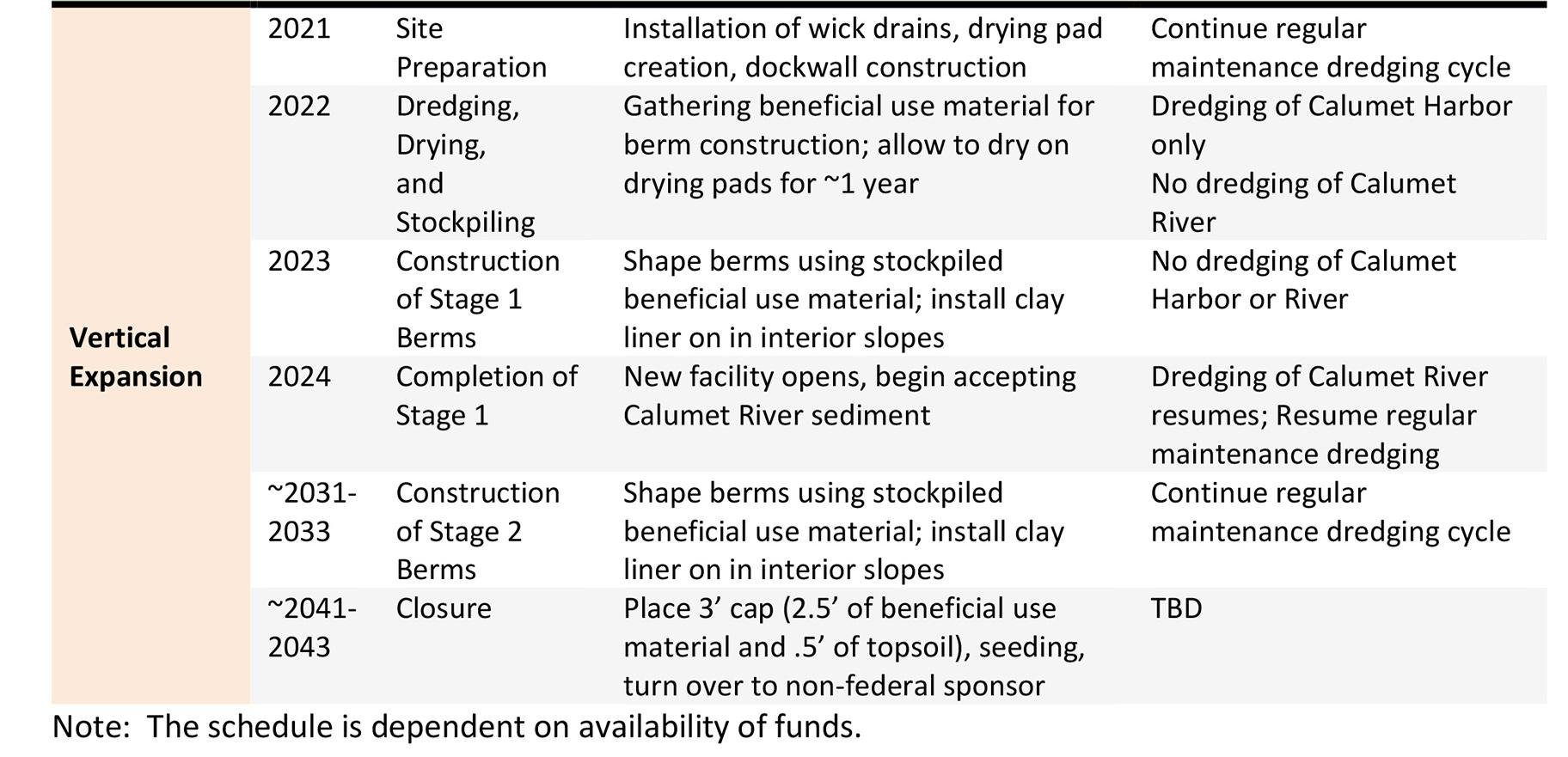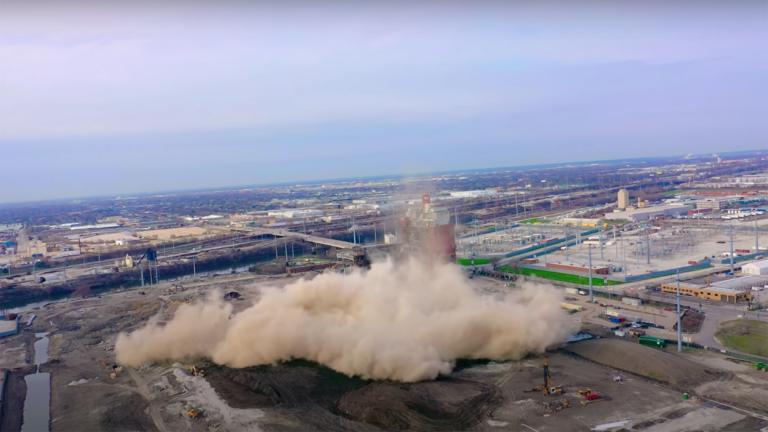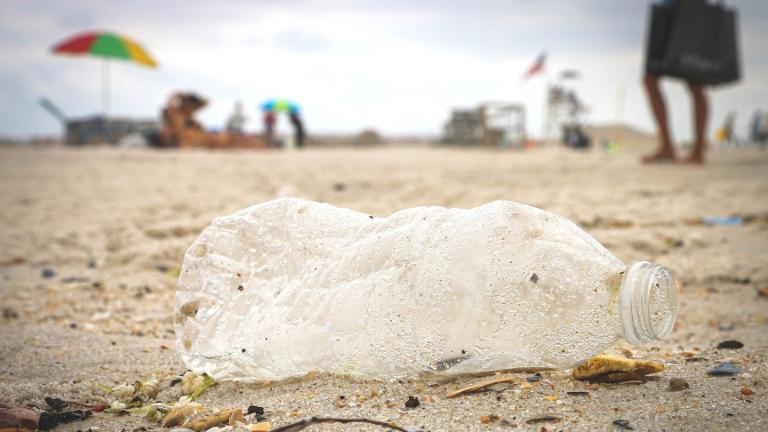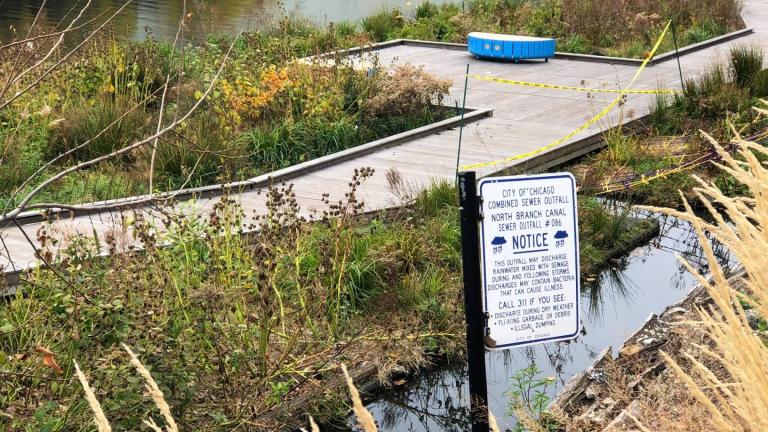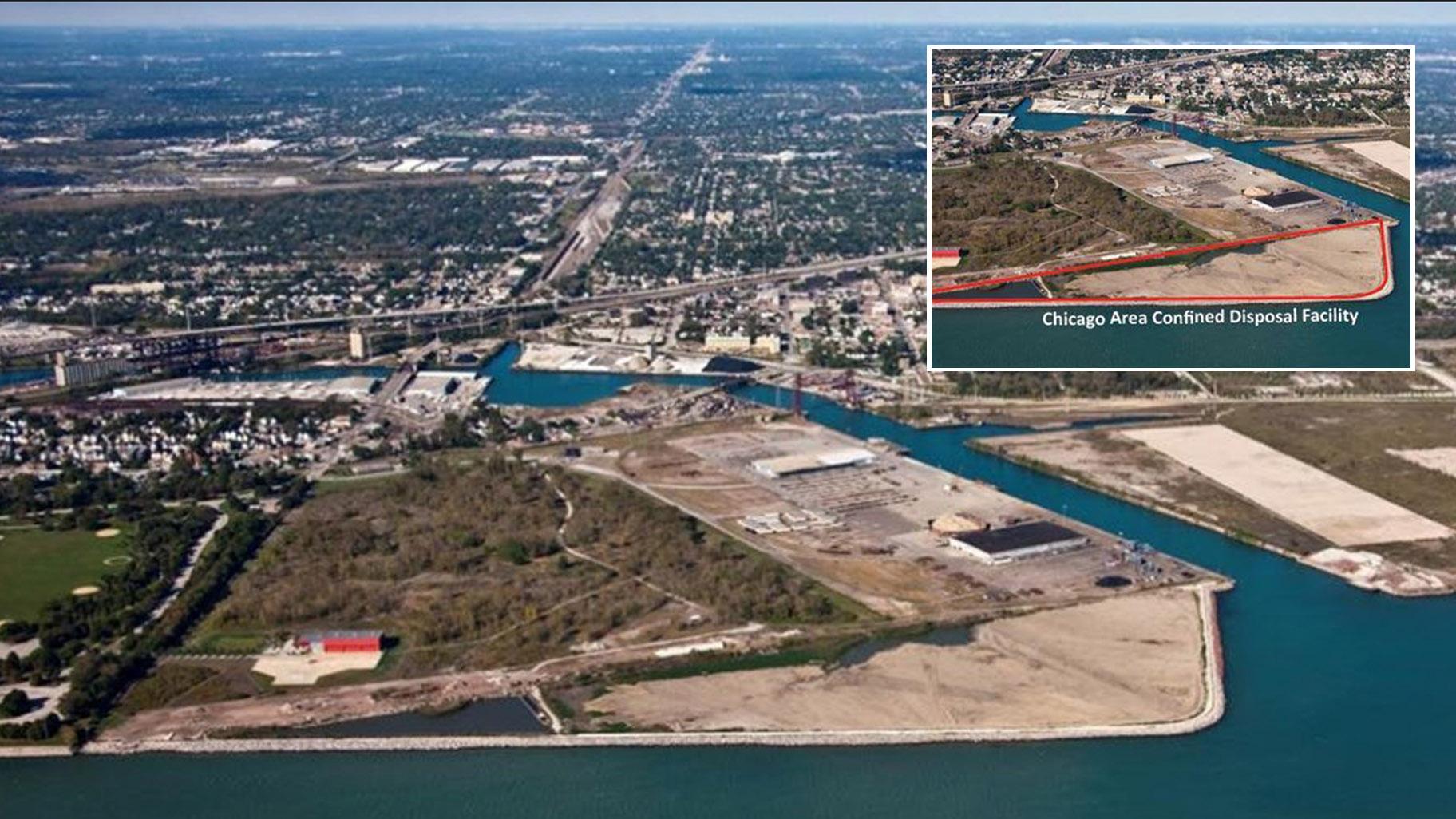 An aerial view of the Chicago Area Confined Disposal Facility, a 45-acre site on Chicago’s Southeast Side that has been in operation since 1984. Inset: The CDF is outlined in red. (Credit: Army Corps of Engineers)
An aerial view of the Chicago Area Confined Disposal Facility, a 45-acre site on Chicago’s Southeast Side that has been in operation since 1984. Inset: The CDF is outlined in red. (Credit: Army Corps of Engineers)
Community organizers on Chicago’s Southeast Side are marshaling their forces and looking for solutions to address what they see as yet another environmental threat to their already beleaguered neighborhood.
Organizers and representatives of environmental groups convened in a digital session Saturday to discuss the Army Corps of Engineers’ plan to expand a toxic sludge dump, called a Confined Disposal Facility (CDF), in Calumet Harbor, at the confluence of Lake Michigan and the Calumet River.
The session “CDF What? A Pollution Dump on the Lakefront” was held as part of an annual conference hosted by the nonprofit group Friends of the Parks.
The CDF, which stores polluted sediment dredged from the Calumet River and the Cal-Sag Channel, was constructed in 1984. The Illinois General Assembly granted use to the Corps with the idea that, once full, the CDF would be topped off and handed over to the Chicago Park District for redevelopment.
The 45-acre site is expected to reach capacity by 2022. But instead of ceasing operation and turning over the property, the Corps’ has decided to extend the CDF’s life via a 22-foot vertical expansion. The Corps estimates that approximately 1.3 million cubic yards of additional sediment — a mix of contaminated soil and water — would be dumped onto the CDF over the next 20 years.
“They’re going to create another mountain of dredge in the middle of the 10th Ward and its parks and lakefront,” environmental lawyer Patricia Sharkey said Saturday.
Critics of the expansion plan say it could lead to compromised drinking water quality, particularly given Lake Michigan’s rising level, shoreline erosion and strong storms that have sent waves crashing over formerly unassailable barriers.
“As a city, society and world we’re beginning to understand issues related to climate change,” said Juanita Irizarry, executive director of Friends of the Parks. “We have a CDF right where storms will continue to batter the lakefront.”
According to the Corps, the current site has operated safely since 1984 and discharges of dredge or fill at the site meet specifications of the Clean Water Act.
The Corps, which has constructed nearly 45 CDFs around the Great Lakes in the past 40 years, says it considered alternate sites for the dredged material during a feasibility study (see slide, below), but concluded that a vertical expansion of the current CDF is a less risky proposition because, for one, it’s located the farthest away from people’s homes. Input from residents near the alternate sites also led the Corps to weigh the implications of expanding an existing site versus constructing a new dump in another environmentally burdened community.
“This is such a sore subject,” Olga Bautista, founder of the South East Coalition to Ban PetCoke, told WTTW News in a prior interview. “They’re all bad ideas. There’s not one proposal that’s acceptable,” she said, a situation she likened to considering, “If you have to get shot, where do you want to get shot.”
During Friends of the Parks’ virtual workshop, Ders Anderson, greenways director at Openlands, suggested some alternative solutions for dealing with the polluted sediment, including transporting it to landfills elsewhere in Illinois or in Indiana, which he estimated would cost the city about $1 million a year, based on what the city already pays a waste hauler to take other materials to landfills.
“That’s not a huge amount of money,” Anderson said. “The system is already in place for moving this material out of the neighborhood.”
According to the Corps’ plan released in August, private management of the polluted sediment in a landfill, while “potentially viable for small-scale applications,” was not a feasible option due to the cost and volume associated with the Chicago CDF.
Anderson also suggested that the need for the CDF could be stopped at its source, by preventing pollution from entering waterways in the first place.
The Calumet River and Cal-Sag Channel are dredged in order to maintain federally mandated depths required for “safe, reliable and efficient navigation” of ships, per the Army Corps. If it weren’t contaminted, the sediment could be dumped in open water. But sludge from the river and channel is loaded with pollutants including arsenic, lead, manganese and mercury. Sources of the pollutants include historical discharges in the pre-Clean Water Act days, as well as stormwater runoff and combined sewer overflows.
Though the Army Corps says site preparation could begin next year, provided funds are available, the groups taking part in Saturday’s workshop vowed to continue to protest the dump’s expansion.
In a 37-page letter submitted to the Corps in August, Friends of the Parks stated: “Time is up for the federal government using Chicago environmental justice communities as a dumping ground. Time is up for the use of the 10th Ward’s long promised park land as a cheap lakefront dump.”
On Saturday, the group discussed the need for elected officials to voice their opposition to the Corps’ plan.
“The Southeast Side is already environmentally burdened. This community is tired of being a dumping ground,” said Amalia NietoGomez, executive director of the Alliance of the Southeast, who noted the area has high rates of cancer and asthma. The working-class community is home to mostly Black and Latino residents.
Bautista said her organization and others like it need resources to continue to fight to improve their community.
“This is definitely an uphill battle,” she told WTTW News. “I don’t think we have the political power to stop it.”
Irizarry said Friends of the Parks is getting involved in the issue because it relates to the organization’s Last Four Miles plan to add 500 acres of new parks and beaches along the lakefront, which would provide recreational and health benefits for Chicago residents. According to the Friends’ letter, the CDF location is “the last significant link on the south side to complete Daniel Burnham’s vision of a park system spanning the entire Chicago lakefront.”
Irizarry says the community and environmental groups will continue to fight the CDF.
“We have a lot of strategizing to do,” she said. “This is a touchpoint in a long continuum of conversations.”
Annemarie Mannion is a freelance contributor to WTTW News.
Additional reporting by Rebecca Palmore.


